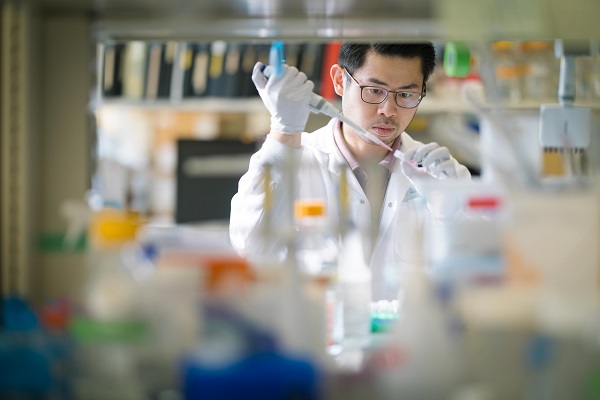 “Our results show these particles are homing onto the inflamed lungs, making them a promising treatment option for several lung diseases,” - Dr. Alvin TieuTiny particles called extracellular vesicles (EVs) released by mesenchymal stem cells (MSCs) have shown clear potential to treat several lung diseases in animal models by reducing inflammation. However, there has been debate about where MSC-EVs end up in the body once injected into the blood stream.
“Our results show these particles are homing onto the inflamed lungs, making them a promising treatment option for several lung diseases,” - Dr. Alvin TieuTiny particles called extracellular vesicles (EVs) released by mesenchymal stem cells (MSCs) have shown clear potential to treat several lung diseases in animal models by reducing inflammation. However, there has been debate about where MSC-EVs end up in the body once injected into the blood stream.
Researchers at The Ottawa Hospital and uOttawa used state-of-the-art live imaging to track this in a mouse equivalent of acute respiratory distress syndrome (ARDS). The results, published in Stem Cell Research and Therapy, show that the injected MSC-EVs accumulated the most in the lungs, followed by the liver and the spleen. They accumulated much more in the lungs of sick mice than they did in healthy mice. The greatest lung accumulation happened when MSC-EVs were given 24 hours after lung injury, when lung inflammation was at its peak.
“Our results show these particles are homing onto the inflamed lungs, making them a promising treatment option for several lung diseases,” said lead author Dr. Alvin Tieu, who was co-supervised by Drs. Manoj Lalu and Duncan Stewart.
Authors: Alvin Tieu, Duncan J. Stewart, Damian Chwastek, Casey Lansdell, Dylan Burger & Manoj M. Lalu
Funding: This study was funded by the Ontario Lung Association. All research at The Ottawa Hospital is enabled by generous donors to The Ottawa Hospital Foundation.
Core resources: Preclinical Imaging Core
The Ottawa Hospital is a leading academic health, research and learning hospital proudly affiliated with the University of Ottawa and supported by The Ottawa Hospital Foundation.
